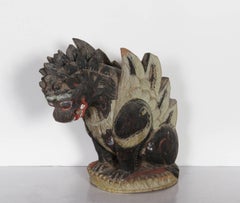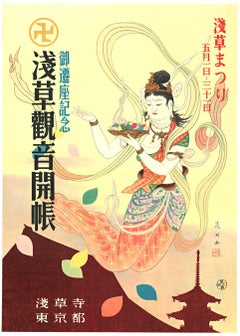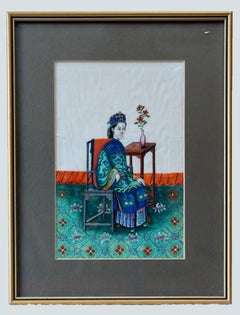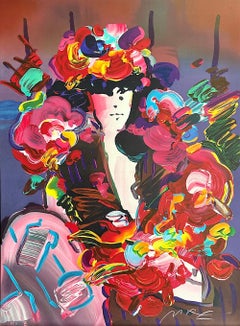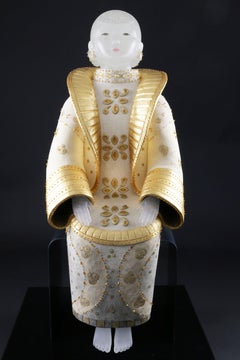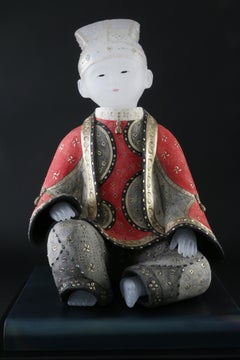Ming Art
to
1
3
2
2
Overall Width
to
Overall Height
to
1
1
5
1
1
117,193
65,340
53,672
26,844
14,566
9,441
6,045
5,769
4,155
3,018
2,549
2,268
2,242
721
3
7
6
2
2
2
2
2
2
2
1
1
1
1
1
1
1
1
1
1
1
2
2
1
1
1
1
6
1
Style: Ming
Dragon, Painted Wood Sculpture Chinese Early 20th Century
Located in Long Island City, NY
Origin: Chinese
Artist: Unknown
Title: Dragon
Medium: Hand-Carved and Painted Wood Sculpture
Size: 11.5 in. x 13 in. x 6 in. (29.21 cm x 33.02 c...
Category
20th Century Ming Art
Materials
Wood, Paint
$1,040 Sale Price
20% Off
Original LEE MON WINE & LIQUOR CO. Imported Wines, vintage antique poster, NYC
Located in Spokane, WA
Original Lee Mon Wine and Liquor Co. New York, vintage poster. Size: 17" x 22.5". It is professionally acid-free archival linen backed and ready to frame. No date is on the poster,...
Category
1930s Ming Art
Materials
Lithograph
Woman and Two Children, Asian Carved Jade Sculpture
Located in Long Island City, NY
Origin: Thai
Artist: Unknown
Title: Woman and Two Children
Medium: Jade Sculpture, (Nephrite)
Size: 21x10x4 in.
Category
20th Century Ming Art
Materials
Precious Stone
Procession, China, Ming Dynasty
Located in Palm Desert, CA
A set of figurative sculptures, ceramic in greens and browns by an unknown Chinese artist. The piece is from the Ming Dynasty and is unsigned.
Category
15th Century and Earlier Ming Art
Materials
Ceramic
Original "Asakusa Festival". Sensoji Temple Tokyo vintage poster Japan
Located in Spokane, WA
Original. Linen backed Sensoji Temple Tokyo. Buddhist poster. Features the Buddha giving off lotus pedals, while floating above a city. Behind him is a pagoda—rare original Asian travel poster.
"Asakusa Festival". Sensoji Temple Tokyo This poster does not show a date.
Sensoji (浅草寺, Sensōji, also known as Asakusa Kannon Temple) is a Buddhist temple located in Asakusa. It is one of Tokyo's most colorful and famous temples. This temple is dedicated to Kannon, the Buddhist goddess of mercy.
The Sanja (Sensoji) Festival of Asakusa Shrine is held on the third weekend in May. It became very popular during the Edo period (1603-1868), and today it features the parading of more than a hundred mikoshi (portable shrines) by residents around the crowded streets near Asakusa Shrine.
Japanese Railway...
Category
1950s Ming Art
Materials
Offset
Chinese courtesan
Located in London, GB
The painting is a delicate Chinese export artwork rendered on rice paper, showcasing the refined detail and stylistic elegance characteristic of 18th to 19th-century export art made ...
Category
19th Century Ming Art
Materials
Tempera, Rice Paper
Children Playing, Painted Porcelain Chinese Urn
Located in Long Island City, NY
Origin: Chinese
Artist: Unknown
Title: Children Playing
Medium: Porcelain Urn
Size: 16 x 9.5 x 9.5 in.
Category
20th Century Ming Art
Materials
Porcelain
Related Items
Pop Art-Figurative Animal Sculpture-Friday
Located in Beijing, CN
Description
Xu Ming (B.1983)
Friday
Resin, electroplating
27 x 17 x 8 cm
Dated 2021
The artwork comes with an COA
About Xu Ming
Emerging artist Xu Ming was born in 1983 in Changchun, China. He earned his M.A at Jilin University of Arts. Xu once worked for famous established Chinese contemporary artist Fang Lijun...
Category
2010s Ming Art
Materials
Resin, Coating
BROWN LADY II Signed Lithograph, Fashion Portrait, Woman In Flower Hat, Pop Art
By Peter Max
Located in Union City, NJ
BROWN LADY II is an original hand drawn lithograph by the American artist and Pop Art icon, Peter Max printed in an edition of 100, using traditional han...
Category
1990s Ming Art
Materials
Lithograph
Purple Heart
Located in New Orleans, LA
The artist says of her work...
Arrested Symphony is an exhibition incorporating sculptures, reliefs, drawings and hanging works that explore the theme of injustice that is at the roots of the predatory gem and mineral excavation industry. While at a residency in Knoxville, Tennessee, I discovered that Oakridge was only 30 miles away. Oakridge played a key role in the development of the Atom Bomb and the Manhattan Project. I began an exploration and comparison of Uranium and Emeralds. These minerals look very much alike, beautiful but dangerous on their effect on civil conflict. Colombia my birthplace, has the finest Emeralds in the world. The mining of Emeralds was an important element in the continued colonization of the region. Emeralds have helped to fund the more than 60-year conflict which has taken over 450,000 lives and displaced about 5.7 million people. Uranium has brought destruction to a level which altered the future of warfare. The developments made during the Manhattan Project led to the death of about 700,000 people and its effects are still felt around the world. I use Colombia as an example, however this situation is repeating itself in many parts of the world. Sierra Leone, Liberia, the Republic of Congo, the Central African Republic and the Democratic Republic of Congo are all involved in brutal civil conflicts fueled by Blood Diamonds. This project will make visual the human cost extracted with these minerals, once exposed to the light of day they can never be unearthed.
My practice is an ongoing object-based exploration through which I create artworks which are organic and improvisational constructions that are infused with hope and renewal. The hand-crafted artworks are poetically and intricately crafted, creating an intimate repository for the individual and collective memory and implement the human body as a symbol and expression of nature, vulnerability and power. The work encourages viewers to reconsider social and historical narratives especially when dealing with the aftermath of Colonialism and raises critical questions about the politics of erasure and exclusion.
ESPERANZA CORTÉS is a Colombian born contemporary multidisciplinary artist based in New York City. Cortés has exhibited in the United States in solo and group exhibitions in venues including Smack Mellon Gallery, Neuberger Museum of Art, Bronx Museum of Art, Queens Museum, El Museo Del Barrio, MoMA PS1, Socrates Sculpture Park and White-box Gallery in New York City. Nationally Cortes exhibitions include Cleveland Art Museum, OH, CSU Galleries at Cleveland University, OH, Helen Day Art Center, VT and The Lorenzo Homar...
Category
21st Century and Contemporary Ming Art
Materials
Metal
Rural Landscape - Vintage Offset Print after Giorgio Morandi - 1973
Located in Roma, IT
Rural Landscape is a vintage offset print, reproducing the original watercolor by Giorgio Morandi.
Signature and date by the artist is perfectly reproduced on plate. Image Dimension...
Category
1970s Ming Art
Materials
Offset
$357
H 14.77 in W 19.1 in D 0.04 in
Christo, Lower Manhattan Packed Buildings (Monuments) - Signed Print
By Christo
Located in Hamburg, DE
Christo (American-Bulgarian, b. 1935)
Lower Manhattan Packed Buildings (2 Broadway and 20 Exchange Place, from Monuments), 1968
Medium: Offset and screen print on Bristol board
Dimen...
Category
20th Century Ming Art
Materials
Offset, Screen
$5,835
H 27.56 in W 21.46 in
Waiting, Pop Art Framed Offset Print by Will Barnet
By Will Barnet
Located in Long Island City, NY
Waiting from the Kent Bicentennial Portfolio
Will Barnet, American (1911–2012)
Date: 1975
Offset Lithograph (unsigned as issued)
Image Size: 11.25 x 11 inches
Size: 17 x 14 in. (43.1...
Category
1970s Ming Art
Materials
Offset
THE DOORWAY Signed Lithograph, Woman, Sleeping Cat, Victorian Stained Glass
By Will Barnet
Located in Union City, NJ
THE DOORWAY by the American painter and printmaker Will Barnet (born May 25, 1911 - died Nov. 13, 2012) is an original 12-color, hand drawn lithograph, with gold and silver silkscree...
Category
1990s Ming Art
Materials
Lithograph
$1,085 Sale Price
30% Off
H 39 in W 23 in
"Evolution, Bison" (2019) By Julia Mulligan, Original Ceramic Sculpture
Located in Denver, CO
"Evolution, Bison" (2019) by Julia Mulligan is an original, handmade ceramic and gold leaf sculpture on a wooden base that depicts a bison with gold horns.
My childhood, from about...
Category
2010s Ming Art
Materials
Gold Leaf
$3,187 Sale Price
25% Off
H 12 in W 13 in D 8 in
Roman Temple - Vintage Offset Print by G. Engelmann - Early 20th Century
Located in Roma, IT
Roman Temple is a vintage offset print on paper, realized after G. Engelmann in the Early 20th Century.
The artwork is signed on the plate. In very good condition.
The artwork rep...
Category
Early 20th Century Ming Art
Materials
Offset
$238
H 11.82 in W 15.75 in D 0.04 in
QUIET AFTERNOON Signed Lithograph, Seated Young Woman, Vase of Flowers
Located in Union City, NJ
QUIET AFTERNOON is an original hand drawn lithograph by the American woman artist Susan Sahall, printed in the early 1980's, using hand lithography techniques on archival Arches printmaking paper, 100% acid free. QUIET AFTERNOON portrays a very sensitive female portrait drawing of a seated young woman wearing a black pleated bell sleeve dress posed holding her hands clasped near her cheek, elbows resting on a table; a bouquet of pastel color flowers fill a carafe vase in front of her. She appears to be in quiet thought...
Category
1980s Ming Art
Materials
Lithograph, Mixed Media
Charming Meissen Porcelain Cat and Mouse Figurine, Circa 19th Century
Located in Detroit, MI
This charming figurine from Meissen Porcelain is of a cat with a captured mouse in his mouth, seated on its haunches, its left forepaw raised to strike the mouse dangling from its mo...
Category
19th Century Ming Art
Materials
Porcelain
$3,600
H 7.5 in W 6.5 in D 3 in
I Castelli Romani - Vintage Poster after Neal Slavin - 1983
By Neal Slavin
Located in Roma, IT
I Castelli Romani is a splendid poster realized by Neal Slavin, in 1983, for the exhibition held in Rondanini Gallery in Rome.
Offset print, in very good conditions.
Category
1980s Ming Art
Materials
Paper, Offset
$214
H 23.63 in W 29.53 in D 0.04 in
Previously Available Items
Deco Queen
By Vivian Wang
Located in Rye, NY
Description by the artist: Several years ago, I visited Shanghai where I was delighted and fascinated by its stunning Art Deco buildings, many of which line the seaside area of the c...
Category
Early 19th Century Ming Art
Materials
Steel, Gold Leaf
Festival
By Vivian Wang
Located in Rye, NY
GIRL IN RED portrays a young Mongolian girl during the Yuan Dynasty (1279 - 1368) when all of China was under Mongolian rule. Her attire is a blend of Mongolian and Han Chinese eleme...
Category
2010s Ming Art
Materials
Gold Leaf
Mongolian Leopard
By Vivian Wang
Located in Rye, NY
MONGOLIAN LEOPARD portrays a boy of the Mongolian royal court. He wears a fashionable ancient costume with an elaborately adorned hat. His high collar and his tunic’s asymmetric fr...
Category
15th Century and Earlier Ming Art
Materials
Stoneware, Silk, Glass
Vintage Large Asian Poster Framed and Matted in a Gilt Frame
Located in Plainview, NY
A large Vintage Asian poster wonderfully framed and matted. This highly decorative print has been spectacularly matted and framed as it is certai...
Category
1950s Ming Art
Materials
Paper
"Buddha Flanked by Female Attendants, " Gouache on Wood Panel, c. 1600
Located in Chicago, IL
This rare mural was painted in China over four centuries ago, and is an exquisite example of Buddhist art. The enlightened Buddha is shown standing at the center of the painting, dressed in colorful robes. Female attendants...
Category
Early 17th Century Ming Art
Materials
Wood, Gouache
H 28.75 in W 44.25 in D 2.25 in
Portrait of Confucius Black and White Print
Located in Houston, TX
Black and white woodblock print of Confucius, a Chinese philosopher and politician, originally by Wu Daozi (685–758) from the Tang Dynasty. T...
Category
20th Century Ming Art
Materials
Woodcut
Monumental Chinese Ancestral Painting
Located in Houston, TX
This Cultural token of Chinese Art allows us to peak into the past and appreciate ancient beauty and mystery. Often times these paintings were intended to honor ancestors that had pa...
Category
Late 19th Century Ming Art
Materials
Acrylic
Buddha
Located in Long Island City, NY
Artist: Unknown
Title: Buddha
Medium: Bronze Sculpture
Size: 15 x 12 x 10.5 in.
Category
Early 20th Century Ming Art
Materials
Bronze
Ming art for sale on 1stDibs.
Find a wide variety of authentic Ming art available for sale on 1stDibs. Works in this style were very popular during the 20th Century, but contemporary artists have continued to produce works inspired by this movement. Frequently made by artists working with Paint, and Wood and other materials, all of these pieces for sale are unique and have attracted attention over the years. Not every interior allows for large Ming art, so small editions measuring 9.5 inches across are also available. Prices for art made by famous or emerging artists can differ depending on medium, time period and other attributes. On 1stDibs, the price for these items starts at $750 and tops out at $35,000, while the average work sells for $5,000.
